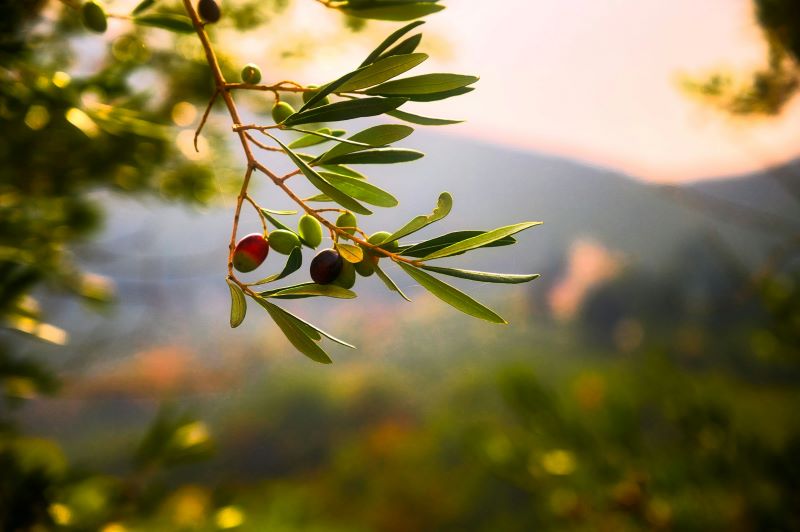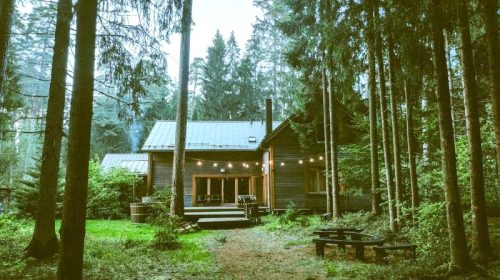Bare Root Fruit and Flowering Trees
By Josh Reilly
Where to begin with garden trees? I could easily use up the whole column on just one species of tree. Trees in the garden are so final. Planting them is a big task, requiring a hole as deep as the root system and twice as wide. Not to mention gopher protection. And what if your life takes you elsewhere and you must leave that beloved tree behind? When my Dad died, my co-workers gave me a pine tree to plant in his memory, which I did, with my son’s able assistance. A year later we moved here. I watched my (much larger) pine grow via Google Maps for a few years after that. Last time I looked it appeared to have been removed or perhaps killed by a disease. Time eventually erases our most noble gestures and treasured monuments. There’d be a lot of clutter if it didn’t.
Trees can be intimidating. They take up space and throw shade. They can dominate the landscape. They take forever to grow. They shed leaves or needles. What if you change your mind? It’s a bit of work to remove them. What about your site? Are there cultivars best suited to your landscape? Then there are the neighbors. Will you be shading out or dropping leaves in your neighbor’s yard? Neighborly relationships have frayed severely over less. None of these qualms, however, comes close to ruling out trees in the garden. Even a small courtyard garden can take a Camelia or two in pots. Many of the trees mentioned below come in dwarf cultivars.
Now is the time to purchase and plant “bare root” fruit trees and roses (covered in an earlier column). Several of our local nurseries, including Mountain Feed and Farm Supply in Ben Lomond and Scarborough Garden Center in Scotts Valley, have a good selection of bare root trees and shrubs available. Consider bare root plum, peach, cherry, apricot, pear, and olive. Before buying, make sure the cultivar you are selecting is hardy enough for your location. We have a wide variety of hardiness zones in the Valley. Near the River or up on a south-facing slope, you may be in Zone 10 or better. Near the River, water absorbs heat in Summer and re-radiates it in Winter, buffering air temperatures. In a hollow, however, where cold, moist air gathers and frost lingers, you may be in Zone 7. Take heed. Some vendors also offer oaks and dogwoods in bare root (you may have to go online to find these). Bare root trees and bushes should be planted the day you get them. If that’s not possible, keep the roots wet until you plant, usually by soaking in a bucket of water.
There are plenty of trees and large shrubs in pots that can be planted in Winter. Many of these are compact enough to work in limited space. River Birch is a favorite, with smooth, silvery white bark broken up by patterned dark strips, delicate branches filled with diamond-shaped, doubly serrated leaves, medium green above, and silvery on the underside, making them shimmer in a Summer breeze. Some willows are available in pots now, including California natives that are of ritual and cultural significance to local indigenous folk. Willow makes a superb live fence or hedge. You may be able to find and plant maples now, keeping in mind their mature size, before you buy. Western redbud, a gorgeous native, can be planted now. It may take several years to bloom, but it’s worth the wait. The smooth, mature bark is a lovely focal point in Winter. Pink Mimosa gives your planting a kind of relaxed yet stately tropical feel when it matures. Royal Star Magnolia and Camelias are early bloomers, flowering in Winter and early Spring, depending on the variety. And there you have it! Trees that deliver the classic California garden style.
Josh Reilly, aka Uncle Skip, writes about seasonal gardening from his home in beautiful Ben Lomond, California.
Featured photo by Lucio Patone
***
Have a story or community news to share? The San Lorenzo Valley Post welcomes your Santa Cruz Mountains news, story ideas, photos, and letters. Send us an email.
Sign up for our newsletter to stay connected to news and events in the Santa Cruz Mountains.
The San Lorenzo Valley Post is your essential guide to life in the Santa Cruz Mountains. We're dedicated to delivering the latest news, events, and stories that matter to our community. From local government to schools, from environmental issues to the arts, we're committed to providing comprehensive and unbiased coverage. We believe in the power of community journalism and strive to be a platform for diverse voices.





